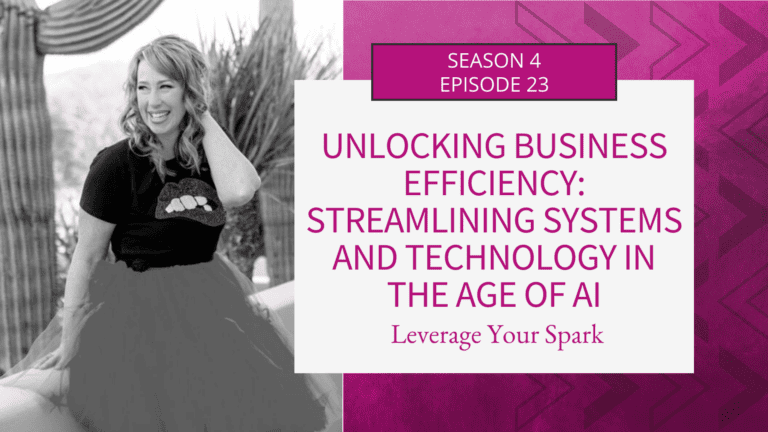Unlocking Business Efficiency: Streamlining Systems and Technology in the Age of AI

There are nearly limitless choices for creating systems and the technology, software and apps you can use to power them. And, those choices and technology are rapidly advancing and changing, especially with the introduction of AI. Many businesses find themselves with a hodge-podge collection of different systems that they are only partially using, don’t necessarily work together and have to keep up with. So while there are systems, they either don’t necessarily work together, or they have overlapping functionality. Many companies that have reduced the time employees spend on email find that employees are now spending more time in Slack. One poorly defined system replaces the resource suck of another. To enhance business efficiency, it is crucial to address system clarity and optimize resource allocation.
The upside to choices is that you can craft the system and select the tools that fit your business and needs really well. And the available software and apps are very customizable by the average person, no custom coding or developer needed to make alterations to the functionality. Great, but someone still has to do the work.
Enhancing Business Efficiency: Unveiling the Purpose and Power of Your Systems
We each have limited energy, brain-power, attention and time. Wouldn’t it be fantastic if we could use those limited resources in the most effective and efficient way?
The key to systems and technology that help create business efficiency and effectiveness instead of hinder them is clarity on how the systems are used and how they work together. To figure this out for your business, here’s some steps to use (and re-use) each time there’s confusion, or when a new tool or feature is introduced:
- Make a list of all your systems if you don’t already have one – this can include tools, tech, apps, file systems, etc. It is helpful to brainstorm with your team as there are likely systems that only sections of the business are using.
- On that list of systems, define the purpose for each system. Yes – I know saying those words are easy, and actually doing it will be challenging. However, this work is foundational for clarity and gaining efficiency. Here’s an example of a system that will be on every list, but the purpose will vary: email. In fact, this could be the hardest one to define a purpose for, because it is likely used for many, many purposes. Remember, this doesn’t have to be perfect, in fact, if you are working towards improving effectiveness with your systems, it will evolve. If you feel that you are starting to overthink it, refer back to episode 21 and embrace the MVP here.
- Review the list of purposes and look for themes and overlaps. Where do you have multiple systems with the same purpose? Is there a bigger theme or definition you can create for other systems to make it easier to know their purpose?
- Use the insights into themes to group systems and reduce mental-load when figuring out where to put and find information. Use the observations on systems with the same purpose to remove redundancy and increase business efficiency.
When the purpose of systems have been clearly defined, it takes less energy and decision power to use the right system. It also reduces wasted time and effort duplicating information or building out processes in places they don’t belong.
Streamlining Client Delivery: Clear System Definitions for Efficiency and Effectiveness
To make this more tangible, here’s our overall system definition for our client delivery work:
All project information belongs in ClickUp (our project management system). In practice, that means that every client task is in ClickUp, all team project communication is in ClickUp, if an email needs to be sent to the client, it goes out from ClickUp, if a supporting document needs to be created, it is linked in ClickUp. This way we have 1 place for all project information.
If there is something urgent or there is something contextual on a project, that can go in Slack, our team messaging system.
We also send no internal email. If a communication needs to happen in the team, it either belongs in ClickUp if it is project related, or in Slack.
Having this clarity means that our systems can run more efficiently, we don’t have overlapping functionality and it is easier to make decisions about if and how to use new features when they become available.
In the next episode we’ll talk more about one of our limited resources and how to better manage it… our attention.
If you enjoyed this episode, you can head over to leverageyourspark.com to subscribe, leave us a review or share with a friend. Everyone deserves to have less stress and more impact!

